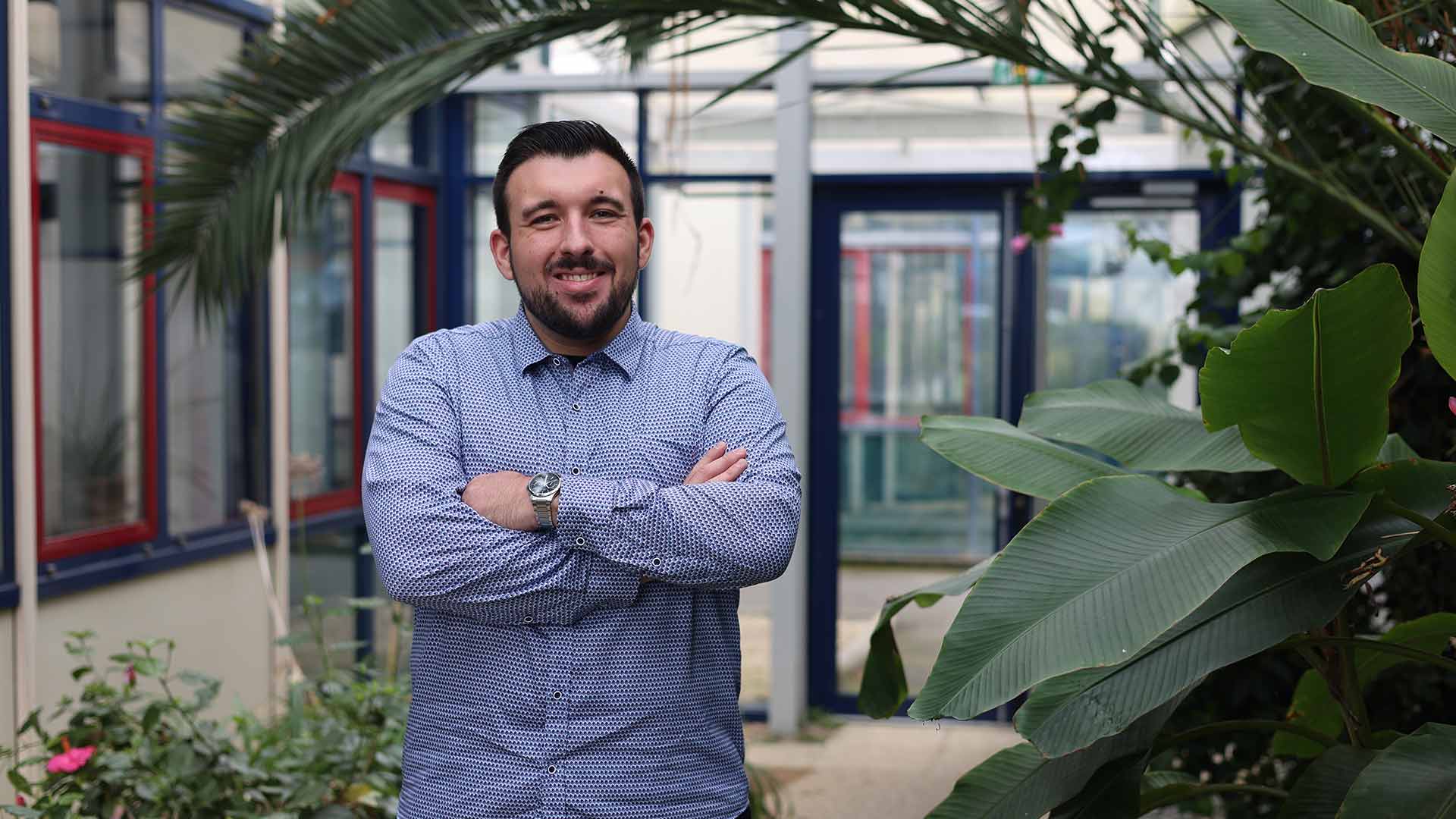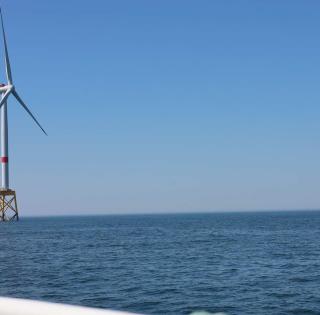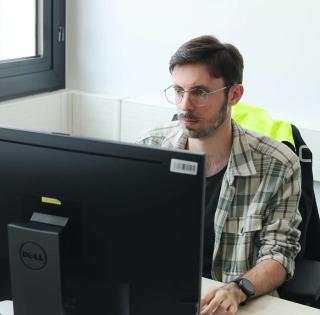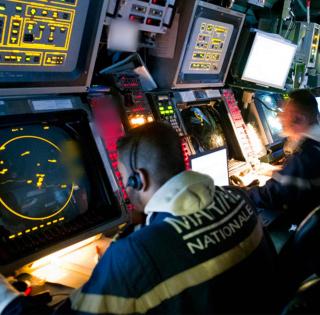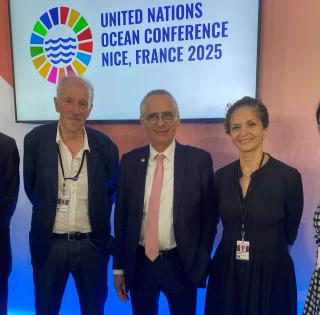
* IETA stands for Armaments Studies and Technology Engineer
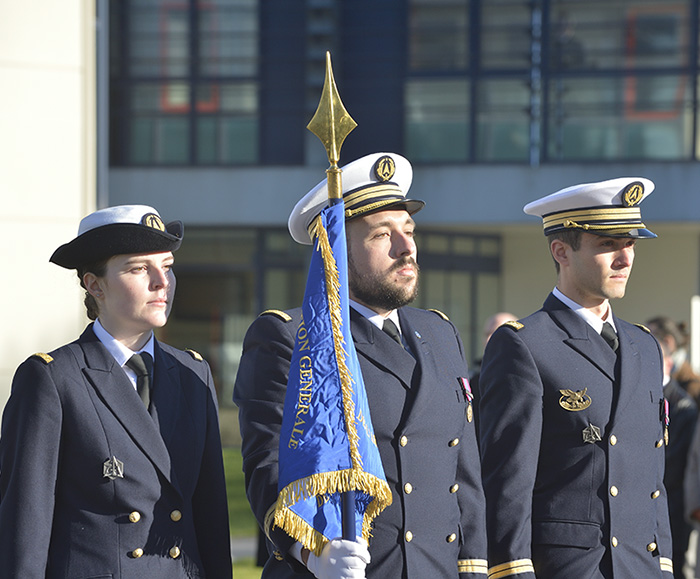
Why did you decide to enroll in ENSTA Bretagne as a military student?
My ambition was to become an engineer and I also felt a duty to enlist and serve my country. ENSTA Bretagne’s IETA military engineering course seemed the best fit given my aspirations.
I got a lot out of the course. I feel like I’ve become more mature, especially after the initial military training year dubbed “Year 0”. The transition between that introductory year and the first year at ENSTA Bretagne was very smooth – I have great memories of the freshers’ induction period. I very much appreciated the mingling between IETA military and civil engineering students.
Personally, I have been fortunate enough to be a flag-bearer during several military ceremonies, which is a sign of recognition from the school and a source of great pride for me.
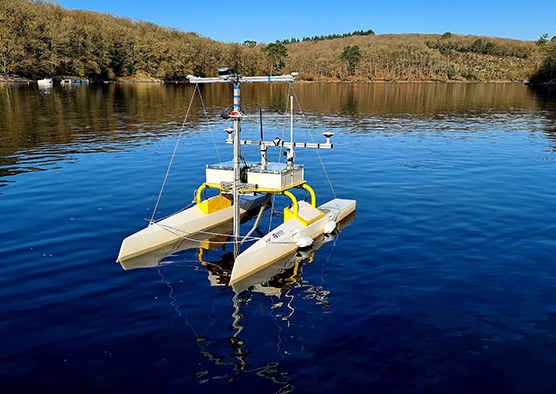
What do you remember from your study years, any particular highlights?
Three projects have particularly stayed with me from my course. The first was during the introductory year (Year 0), which I completed at EOGN Melun (French Gendarmerie Officers’ Academy). I was tasked with designing a software program for combating cybercrime. It gave me a much greater sense of responsibility in terms of my actions.
The second challenge to which I am proud to have contributed is “Miliste”, a list of military engineering students with the aim of raising funds for organizing a sports event in aid of Bleuet de France**, the French war veterans’ charity. I had the opportunity to take part in this list as part of the election campaigns for the new Student Union (BDE). It was an amazing experience, in which I was able, not only to take part in the Student Union campaigns, but also to raise money for a truly worthy cause.
**Bleuet means ‘cornflower’, which is France’s national flower of remembrance.
The third project that I remember as a highlight of my studies was a group-led study on the detection of unidentified floating objects (OFNI in French) for autonomous vessels. Our research was commended by the Brest DGA TN center and by the company Pixel sur Mer (which specializes in the development and integration of equipment for navigation). Knowing that our work has gained recognition from external bodies is extremely rewarding.
When and why did you decide to specialize in autonomous mobile robotics?
When I decided to enroll in ENSTA Bretagne’s IETA military engineering course, my initial intention was to major in “Pyrotechnic systems”. I particularly wanted to contribute to specifications and tests of small and medium caliber ammunition for the DGA. However, during the first year of my course at ENSTA Bretagne, I opted not to take up this major after realizing that the fluid mechanics modules were not for me.
During that year, and thanks to the experience I gained during the initial military training year (Year 0), I became interested in electronics and IT, and wanted to pursue them further. I enjoyed the Sensor-Actuator Loop module which entailed programming a robot in a simulator to get it to autonomously follow a given circuit. I also particularly liked the robotics professors’ teaching methods.
Today, I feel ready to work as an engineer since, during the course, I developed an extensive range of skills ranging from the mechanical production of a robot (design, machining and manufacture) to the implementation of its control algorithms (data processing, guiding and artificial intelligence).
Did you gain any experience abroad during your course?
I completed my second-year internship in Germany, at a research center. My job was to design robotized platforms which students and PhD students could use to implement and test control algorithms.
This experience gave me an insight into a new language and a new culture. I have carried on learning German. It was a decisive internship in my choice of career, since it definitely made me want to follow up my studies with a thesis.
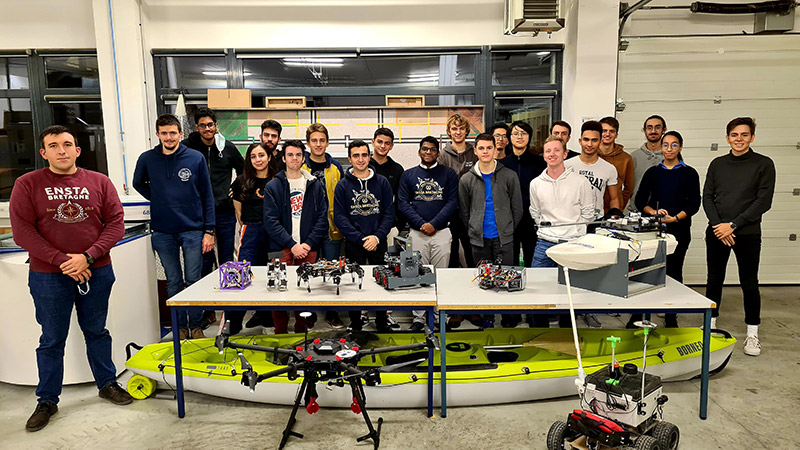
Did you get involved in the school’s student life?
I was vice-president and communications manager of the Robotics Club. We resumed the Robotics Club’s activities after the Covid-19 health crisis. The club’s aim is to take part in the French Robotics Cup, but also to provide other clubs with technical support. For example, one of the projects this year was to produce a CanSat for the Spacieta club.
Managing a club with so many members is more complicated from an organisational than a technical standpoint. I found this challenge to be very constructive since, as engineers, we have a vocation to progress towards managerial positions.
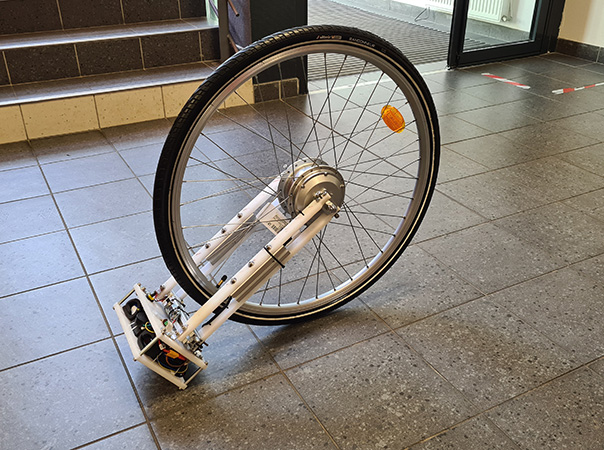
Where did you do your end-of-study internship? What were your duties?
I did my end-of-study internship at the Lab-STICC research laboratory on the ENSTA Bretagne campus, with the intention of doing a thesis the following year. I made sure my internship choices were consistent with my studies. This particular internship focused on an innovation project for the Defense Innovation Agency (AID) of the French Ministry of the Armed Forces.
I suggested using a bicycle wheel to produce a robot. The aim was to produce a low-cost, fast and resistant robot to carry out reconnaissance missions on hazardous or hard-to-reach sites.
The advantage of this system is that it is autonomous and discreet. We will subsequently be able to consider building in an observation system or a tracker. To give an example, this system could be used to perform reconnaissance missions on sites that have been damaged by natural disasters or surveillance missions on military sites.
What subject are you doing your thesis on?
I am doing my thesis on the ENSTA Bretagne campus, at the Lab-STICC. It is being funded by the DGA and bears on the theme of mine action. I am working on the SLAM-F project, a new mine action program. The idea is to protect military personnel thanks to the intervention of a robotic vector.
In practice, this means using a boat that sends autonomous underwater vehicles (AUVs, i.e., a fleet of drones) to probe the seabed. On returning to the surface, the AUVs transmit the SONAR images to the vessel. When a suspicious object is identified, a remotely operated vehicle (ROV) is sent out to check the information using a camera. If the information is confirmed, the ROV can neutralize the suspicious object.
For my thesis, I am working on a path planning algorithm for tapping the characteristics of the sea floor (note: because it is not possible to use SAT-NAV underwater, localization techniques specific to the marine environment must be developed). The challenge is to relocate the path of the AUV to enable the ROV to reach the right object rather than a similar one. My thesis is therefore endeavoring to answer the following question: How can we guarantee that the ROV has reached the correct suspicious object by tapping the characteristics of the sea floor?






